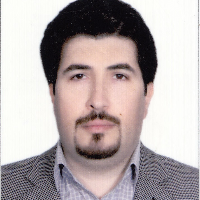Investigation of Absorbance Characteristics of Soil Organic carbon using Laboratory Spectroscopy in dust sensitive areas of Khuzestan Province
In recent years, due to the lack of surface coating and low soil resistance to wind erosion, the large area of Khuzestan province is sensitive to dust production. Among the soil characteristics, the organic matter by collecting soil particles, has important role in soil resistance to wind erosion and dust production. Since these areas are so wide, the use of traditional methods of soil analysis is really costly and time consuming. The spectroscopy approach, due to the advantage of speed and easy movement, can reduce the cost and time of measurement. The aim of this study is to investigate the spectral behavior of soil organic carbon in central and southern regions of Khuzestan province by using tow multivariate regression, Support Vector Regression) SVR( and neural network (PLS-ANN), and key wavelength determination of soil organic matter in these areas.
In this research, the study area was divided into 2 km square grids and systematic and random sampling Methods were performed. The soil organic matter in samples was measured in the laboratory. The Reflectance spectra of soil samples were determined using FildSpect setup in dark room. And spectral measurements were carried out with three types of detectors in range of visible to near infrared (3500-2500 nm). To eliminate the noise in normal reflectance spectra, the main spectra were preprocessed by four methods, including the first derivative with the Savitzky-Golay filter (FD-SG), the second derivative with the Savitzky-Golay filter (SD-SG), the standard normal variant method (SNV) and the continuum removed method (CR). Next, the performance of SVR and PLS-ANN models in main spectra preprocessed method were compared.
The results showed that the PLS-ANN model had better accuracy compared to SVR model in estimating organic carbon. In SVR models, the continuum removal method (CR) had the best performance (R2CAL=0.84, RMSECAL=0.06 and RPDCAL=1.82) and the main Spectra had the worst performance (R2CAL=0.74, RMSECAL=0.14 and RPDCAL=1.66). In PLS-ANN models, the best performance belonged to the second derivative (SD-SG), (R2CAL=0.92, RMSECAL=0.05 and RPDCAL=2.34) and the worst performance was related to the first derivative (FD-SG), (R2CAL=0.80, RMSECAL=0.1 and RPDCAL=1.86).
In this study, the preprocessing methods improved the overall accuracy of SVR and PLS-ANN models compared to the main spectrum. According to the second derivative method, in PLS-ANN witch had the best accuracy in estimating soil organic carbon, the Wavelength ranges around 800, 1800 and 2000 nm were identified as the key wavelength of the organic carbon in sensitive centers to dust production.
- حق عضویت دریافتی صرف حمایت از نشریات عضو و نگهداری، تکمیل و توسعه مگیران میشود.
- پرداخت حق اشتراک و دانلود مقالات اجازه بازنشر آن در سایر رسانههای چاپی و دیجیتال را به کاربر نمیدهد.




